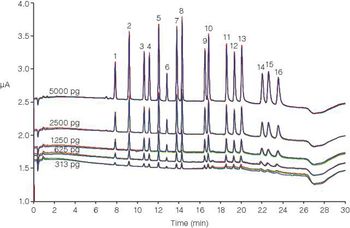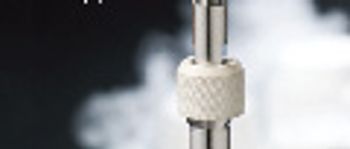
Dionex Application Note

Dionex Application Note

The authors describe the most common cell-based protein expression systems and purification strategies used in the biotechnology industry.

The authors provide an introduction to the topic of biosimilars, review the available regulatory guidance, and discuss the various scientific challenges that are present.

Participants in this discussion are Richard Larsen of Agilent Technologies, Gary Dowthwaite of Biotage, Richard M. LeLacheur and Rohan Thakur of Taylor Technology, and Pat Bennett of Thermo Fisher Scientific.

In the first installment of LCGC's newest column, the authors address the topic of analytical biotechnology.

This article features some of the most frequently used HPLC applications for the characterization of biopharmaceuticals.

Accelerating pharmaceutical studies by using LC-MS ion trap technology to conduct comprehensive metabolism profiling assays

A rapid and environmentally friendly LC method for the simultaneous determination of 12 UV filters in cosmetic samples using ethanol as the mobile phase.

This article describes methods to quantitatively analyse genotoxic and potentially genotoxic impurities in pharmaceutical ingredients

Novel analytical methods for the discovery and trace analysis of biochemically active compunds in three main area are described: protein analysis, screening technologies and multidimensional separations.

Millipore has acquired European-based services provider BioAnaLab, extending the company&39;s biopharmaceutical services business into Europe.

BioTek Instruments has appointed Millennium Science as their official distributor in New Zealand. Millennium Science will now be responsible for sales and support of the company?s entire line of microplate-based instrumentation and software in New Zealand and Australia.

Grace Davison has received the 2009 R&D 100 award for its REVELERIS flash chromatography system. Flash chromatography is used in the purification of new entities in the early stages of drug discovery.

Phytronix Technologies and Agilent Technologies have signed an agreement to promote the Phytronix laser diode thermal desorption (LDTD) ion source with Agilent mass spectrometers.

American life sciences company Promega, has opened a new EuroLab facility in Charbonnières near Lyon, France. The laboratory will be used to develop new applications to address Europe?s scientific needs.

India is an increasingly influential player in the global pharmaceutical market. A pilot study, conducted in two major cities in India, Delhi and Chennai, explored the proliferation of substandard and counterfeit drugs in the market and discussed how the Indian state and federal governments could improve drug regulation and regulatory enforcement to combat this.

A provider of contract laboratory services and manufacturer of scientific instruments in the US, has opened a new European laboratory and office in Warwickshire, UK.

This one day meeting in London, UK, took a look at the use of SFC for pharmaceutical analysis.

Faculty of Health Sciences at the University of Copenhagen will open the doors of its new research centre, The Novo Nordisk Foundation Centre for Protein Research. The centre is the result of an historic donation from the Novo Nordisk Foundation, which in 2007 gave the university €80 million for its establishment.

PerkinElmer and LEAP Technologies have entered into a resale agreement for ultra high performance liquid chromatography (UHPLC) and high performance liquid chromatography (HPLC) technology.

The author looks at both the history and the recent developments in supercritical fluid chromatography (SFC).

Presented here are four types of evaporation-free extractions that are widely applicable.

The guest columnists continue their examination of how statistically rigorous QbD principles can be put into practice.

Several approaches for purifying difficult samples more efficiently for discovery research support are mentioned in this paper. These approaches use mass triggered HPLC on various specialty columns.

This month's "LC Troubleshooting" discussion will center on the recommendations of the CDER document, especially in terms of what it means from a practical method performance standpoint.